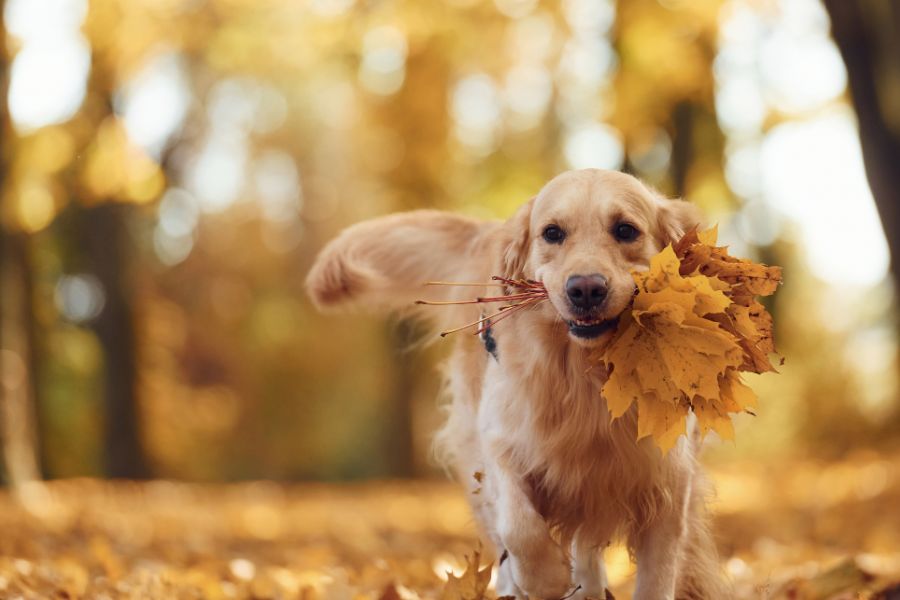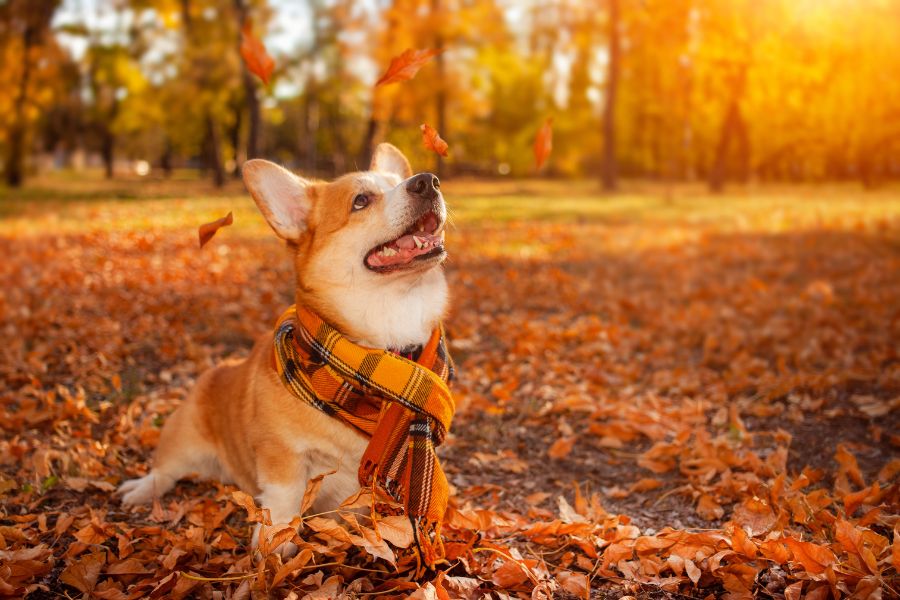As temperatures drop and leaves fall on the sidewalks, many dog owners assume flea and tick season is behind them. After all, ticks and fleas are thought to be a summer problem. Unfortunately, that’s a myth. Fleas and ticks don’t disappear once fall arrives; in fact, these pests can remain active well into the cooler months. For city and suburban dog owners, prevention is just as crucial in October as it is in July. Here are some tips on flea and tick prevention in the fall, along with the importance of staying vigilant to keep both your dog and yourself safe this season.
Fleas and Ticks Don’t Follow the Calendar
Many people believe cold weather kills fleas and ticks, but in reality, these pests can survive surprisingly well into autumn. Some species, such as deer ticks, which can carry Lyme disease, remain active until temperatures consistently drop below 40°F (4 °C). That means in much of Canada and the northern U.S., they can still latch onto dogs in October and even in November, depending on the weather. Fleas are hardy parasites that thrive in warm indoor environments. Even if frost kills off some populations outdoors, fleas can continue reproducing inside homes, kennels, and apartment buildings. The persistence of these insects makes year-round prevention critical. Skipping a month or two of medication could leave your dog vulnerable at exactly the wrong time. Be sure to plan your prevention accordingly to your living situation.
The Importance of Preventatives
Veterinarians strongly recommend using flea and tick preventatives year-round. Whether you choose a chewable, topical treatment, or collar, these products do more than stop itching; they also protect against serious illness. These insects spread various diseases and bacteria. Tick-borne diseases like Lyme disease, anaplasmosis, and ehrlichiosis can cause lasting health problems in dogs and humans alike. Similarly, fleas don’t just cause your dog to itch; they can lead to skin infections, allergic reactions, and even transmit tapeworms. Consistent preventative treatment acts as a safety net. Even if your dog encounters a tick in the park or a flea at doggy daycare, the medication reduces the risk of infestation and illness.
Always Check Your Dog After Time Outdoors
While preventatives do a lot of heavy lifting, they aren’t 100% effective at warding off ticks and fleas all the time. That’s why a thorough post-walk or post-hike inspection should become part of your routine, especially in the fall. To do a quick check, run your hands over your dog’s coat, feeling for small bumps or scabs. Be sure to pay close attention to hidden spots, especially inside the ears, around the neck, between toes, under the tail, and along the belly. Invest in a flea comb if you have a long-haired dog to help spot unwanted fleas and ticks.
Catching a tick early is crucial because removing it within 24 hours significantly reduces the risk of disease transmission.

Avoid Risky Environments
You may not always be able to control where your dog walks, especially on off-leash trails, but you can reduce exposure by avoiding certain areas. Be sure to skip tall and uncut fields. Ticks thrive in these zones, waiting to latch onto passing animals. ‘Tis the season to rake leaves and jump through leaf piles; however, damp piles of leaves are prime real estate for fleas and ticks. It’s ideal to stick to well-maintained paths to prevent unwanted hitchhikers from attaching to your pet. Paved trails, sidewalks, or well-kept grassy areas are less risky than overgrown spaces. By steering your dog toward safer walking routes, you reduce the risk of pests attaching to your dog.
Don’t Let Cooler Weather Fool You
Flea and tick prevention in the fall is essential. It’s easy to think cooler days mean fewer worries about fleas and ticks, but pests don’t vanish just because you’ve swapped shorts for sweaters. In fact, autumn can be one of the riskiest times because people let their guard down. Prevention may feel like an extra chore, but it’s far easier—and more affordable—than treating an infestation or managing a tick-borne illness. With year-round vigilance, you can ensure your dog enjoys every season without pests tagging along. By keeping your dog on preventatives, checking them after outdoor adventures, avoiding risky environments, and taking steps to protect yourself, you’ll keep your household safe and healthy well into the fall.
For your professional pet sitting and dog walking needs, contact Apronstrings Pet Sitting today!




